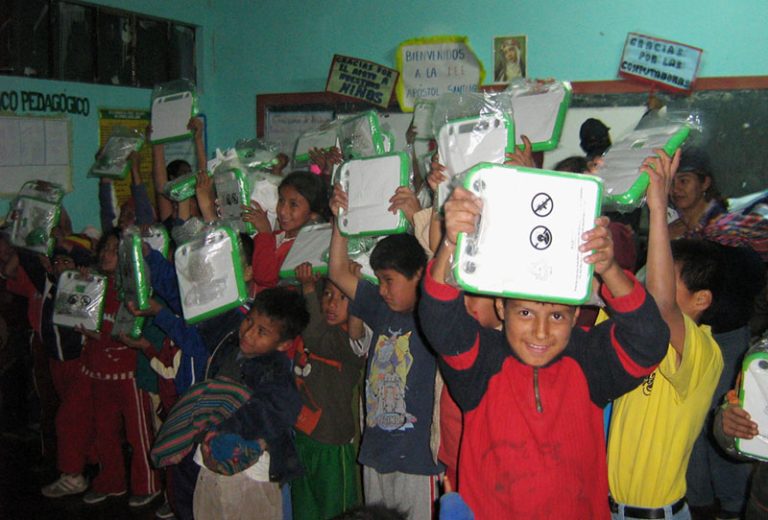OLPC, Peru, and a Vision for Education

Telling people about the One Laptop Per Child (OLPC) program in Peru means I can share one of the best things I’ve done in my life, where my values and the basis of free software and open source came together naturally.
It was the first project that, for me, integrated aspects of the educational system in a clear and objective way, involving not just students, but teachers, parents, neighbors, local authorities, governments, and entire communities, while incorporating lifestyles, cultures ,education, respect, and good values.
The strategy proposed by the Peruvian Government was to prioritize the poorest areas of Peru, delivering a laptop to each child. This delivery was accompanied by a training plan for teachers so they could integrate digital educational tools (open source educational software – Sugarlabs) with the educational capabilities that primary school students should achieve.
Although, the focus of action was concentrated on the students and teachers, something happened with the children outside of their regular school hours and classroom environments; they continued to play and learn, having as a theoretical base, Seymour Papert’s constructionism.
While the children were in their homes, they not only continued to learn, but also shared what they learned (educational software, Internet readings) with their parents, who in many cases were themselves, uneducated.
Children helped their parents, who worked in the fields (as ranchers or farmers) with new methods that facilitated their daily work.
Communication between all members of families increased; parents to children, children to parents, and parents to each other.
The authorities, meanwhile, concerned themselves with giving greater benefits to students, better classroom environments, training for teachers in technology and education, Internet access, electricity, and security.
The first hackathons followed, created for the development of educational software (like Sugarlabs), where the community came together to identify software needs, develop and test software, and train in the use of the software.
Linux-based school servers were installed around the XO OLPC laptops, which contained an elearning platform for distributing content on an Intranet (cloud-private).
Eventually, some students shared their experiences among distant communities, through the Internet. Introverted students became social students, because they now shared their practical knowledge in the use of educational programs with their classmates.
Classes saw an Increase in the number of students, students asked their parents to attend classes. Previously, children often helped their parents with work during class hours.
In summary, not only was this an investment in educational technology, it was an investment in improving society under a scheme of collaboration, creating a more open society, a society in which the entire educational community was interested in learning by learning.
The vision of improving the education of children through the OLPC project in Peru started at the very top and involved everyone, from the President, the education minister, and the director of educational technologies. In all of this, I was just a person who articulated the efforts of a large group of people with the same vision and it was wonderful.
A big hug to everyone!